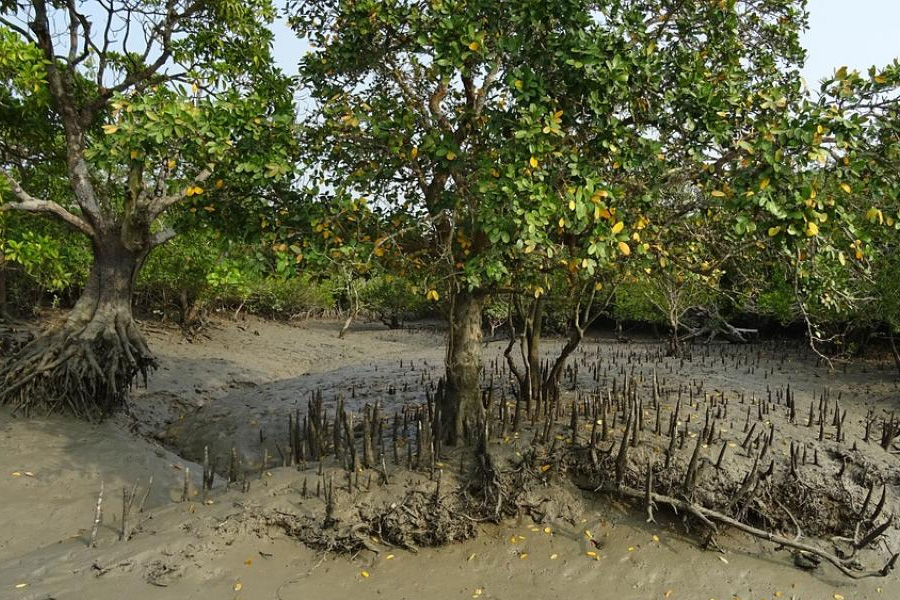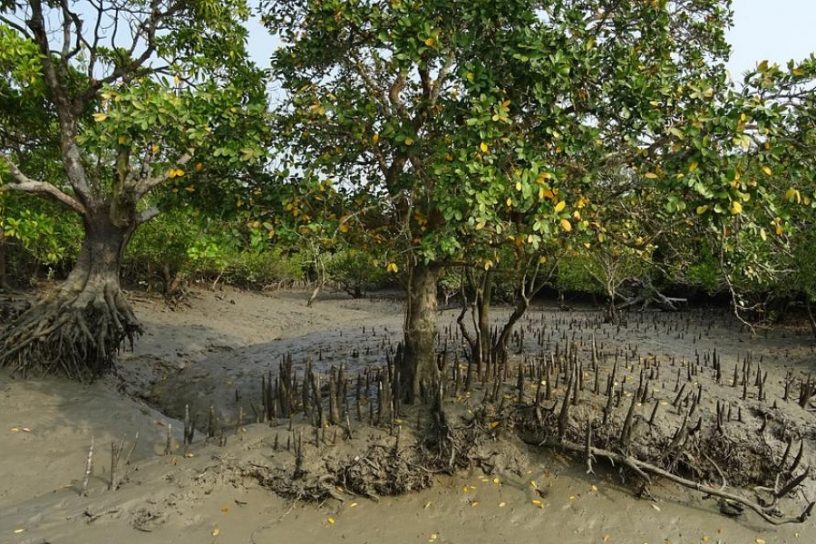
This study concludes that plantation with iteroparous mangrove species can improve ecosystem function and services at degraded mudflats dominated by semelparous grass and aid in achieving the Sustainable Development Goal 13 (Climate action).
Authors
Abhiroop Chowdhury, Professor, Jindal School of Environment & Sustainability, O.P. Jindal Global University, Sonipat, Haryana; Ecological Restoration Laboratory, Department of Environmental Science & Engineering, Indian Institute of Technology (ISM), Dhanbad 826004, Jharkhand, India.
Aliya Naz, Assistant Professor, Jindal School of Liberal Arts and Humanities, O.P. Jindal Global University, Sonipat, Haryana, India.
Rajarshi Dasgupta, School of Public Policy, Indian Institute of Technology, Hauz Khas, New Delhi, India; Integrated Sustainability Centre, Institute for Global Environmental Strategies, 2108-11, Kamiyamaguchi, Hayama, Kanagawa 240-0115, Japan.
Subodh Kumar Maiti, Ecological Restoration Laboratory, Department of Environmental Science & Engineering, Indian Institute of Technology (ISM), Dhanbad 826004, Jharkhand, India.
Summary
Sundarban is the world’s largest contiguous mangrove forest but is under threat from anthropogenic interventions. Plantations are the favored method to restore degraded mudflats. In this study, ecological functional soil indicators (available N, soil organic C, available P, salinity) and service (Blue carbon pool) of the iteroparous tree Avicennia marina (Forssk.) Vierh. (Acanthaceae family), plantation has been compared with a natural mudflat dominated by mangrove semelparous grass Proteresia coarctata (Roxb.) Tateoka (Poacease family). Both sites were under anthropogenic pressure.
It was observed that the P. coarctata dominated natural site has gone through fluctuations in species population between 2012 and 2016 with higher Simpson’s dominance, and lower value of the Shannon–Weiner Index. A one-way Analysis of Variance (ANOVA), Principal Component Analysis (PCA), indicated that soil indicators have significantly varied and linearly increased across the years at the A. marina plantation site.
Blue carbon pool increased by four times (10 cm soil depth) at the plantation site since 2012 compared to only one time in the mangrove grass dominated community within the study period (2012–2016). This study concludes that plantation with iteroparous mangrove species can improve ecosystem function and services at degraded mudflats dominated by semelparous grass and aid in achieving the Sustainable Development Goal 13 (Climate action).
Published in: Sustainability
To read the full article, please click here.


